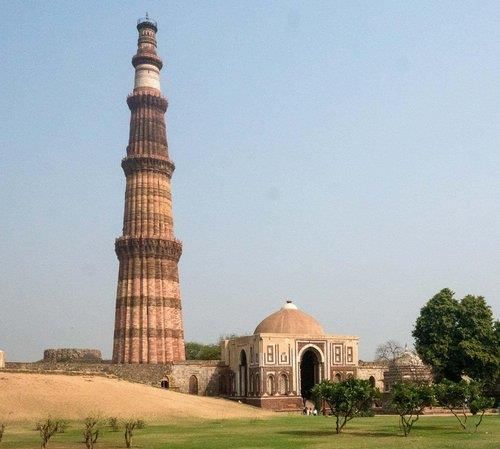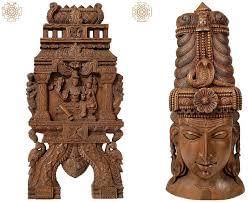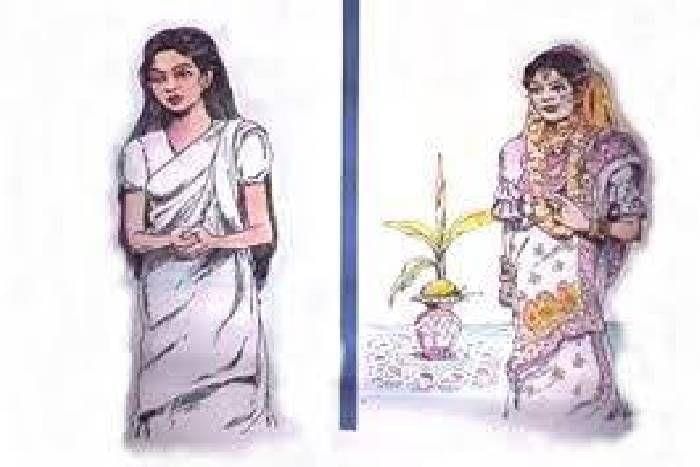|
Card: 1 / 40 |
What significant changes occurred in India's religious landscape between the eighth and eighteenth centuries? |
|
Card: 2 / 40 |
The period saw the integration of Brahmanical ideas through Puranic texts, the transformation of local deities into recognized forms of major gods like Vishnu, and the emergence of diverse beliefs classified under 'Hindu', despite conflicts between different sects.  |
|
Card: 3 / 40 |
Fill in the blanks: Brahmanical ideas became accessible to traditionally excluded segments of society, such as ___ and ___, through the use of simple Sanskrit verse in Puranic texts. |
|
Card: 5 / 40 |
True or False: Conflicts between different religious groups in India during this period were primarily due to the lack of interaction among the various traditions. |
|
Card: 6 / 40 |
False. Conflicts arose from the emphasis on the supremacy of deities like Vishnu or Shiva and interactions with other traditions like Buddhism and Jainism.  |
|
Card: 7 / 40 |
Which local deity in Puri became recognized as a form of Vishnu by the twelfth century? |
|
Card: 9 / 40 |
How did Tantric practices associated with goddess worship differ from traditional religious practices in India? |
|
Card: 10 / 40 |
Tantric practices were notable for being inclusive and transcending traditional caste and class boundaries. |
|
Card: 11 / 40 |
Multiple Choice: Which of the following best describes the devotional worship in the context of Vaishnavism and Shaivism? A) It was limited to temple rituals B) It often involved intense emotional engagement C) It excluded women D) It focused solely on textual study. |
|
Card: 14 / 40 |
They were poet-saints who traveled and sang hymns in Tamil, promoting devotion to Vishnu and Shiva and advocating for social inclusivity. |
|
Card: 15 / 40 |
True or False: The compositions of the Alvars were considered less important than the Vedas by their followers. |
|
Card: 16 / 40 |
False. The compositions of the Alvars were regarded as equally vital, with the Nalayira Divyaprabandham often referred to as the Tamil Veda.  |
|
Card: 17 / 40 |
Women such as ___ and ___ were notable figures in the Bhakti tradition, challenging patriarchal norms through their compositions. |
|
Card: 19 / 40 |
Saguna bhakti emphasizes devotion to ___, while nirguna bhakti focuses on ___ forms of the divine. |
|
Card: 21 / 40 |
How did the Tamil Bhakti traditions interact with the state during the reign of the Chola rulers? |
|
Card: 22 / 40 |
The Chola rulers supported Brahmanical and Bhakti traditions by constructing temples, making land grants, and incorporating bhakti hymns into temple rituals.  |
|
Card: 23 / 40 |
Fill in the blank: The Alvars and Nayanars' hymns often expressed opposition to ___ and ___ as part of their religious compositions. |
|
Card: 30 / 40 |
False. Lingayats ceremonially bury their dead instead of performing cremation. |
|
Card: 32 / 40 |
Vachanas are profound sayings composed in Kannada that offer insights into the beliefs and teachings of the Virashaiva movement. |
|
Card: 33 / 40 |
Fill in the blank: The Virashaiva movement challenged Brahmanical norms such as caste distinctions, ritual pollution, and the concept of ___ . |
|
Card: 35 / 40 |
What practices did the Lingayats support that contradicted the Dharmashastras? |
|
Card: 39 / 40 |
What significant cultural changes occurred in North India due to the arrival of the Turks and the establishment of the Delhi Sultanate? |
|
Card: 40 / 40 |
The arrival of the Turks and the establishment of the Delhi Sultanate weakened the Rajput states and Brahmanical influence, leading to significant cultural and religious transformations, including the rise of Sufism.  |






























